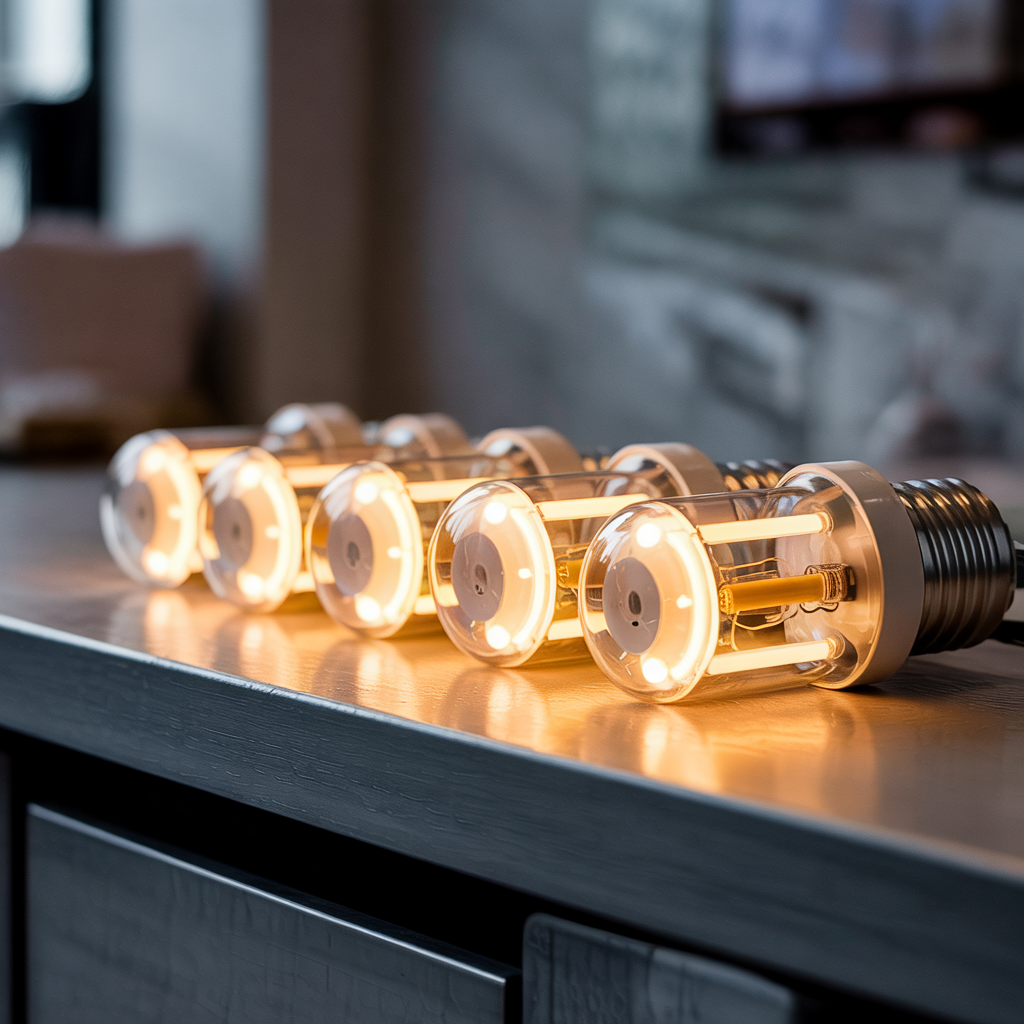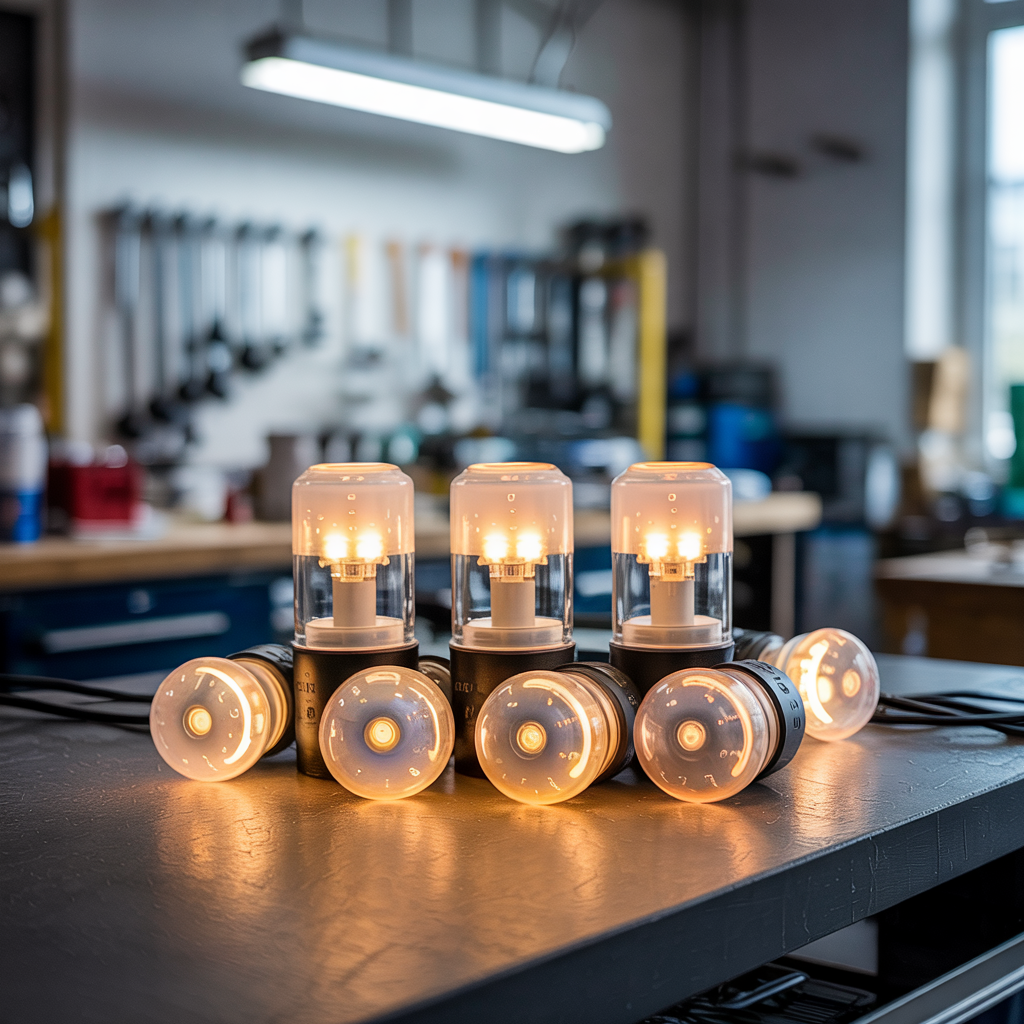Can You Get Warm Fluorescent Light Bulbs LED no Ballast?
Are you looking for energy-efficient lighting that provides a warm, inviting glow? You’ve likely encountered the term “LED” and the question of whether you need a ballast. This comprehensive guide dives deep into the world of LED lighting, specifically focusing on warm white LEDs and the necessity (or lack thereof) for ballasts. We’ll explore the…
Are you looking for energy-efficient lighting that provides a warm, inviting glow? You’ve likely encountered the term “LED” and the question of whether you need a ballast. This comprehensive guide dives deep into the world of LED lighting, specifically focusing on warm white LEDs and the necessity (or lack thereof) for ballasts. We’ll explore the technical aspects in simple terms, compare LEDs to traditional fluorescent lights, and answer all your burning questions. You’ll learn about the benefits, limitations, and the straightforward installation process.
Can you get warm fluorescent light bulbs LED no ballast? Yes, you can get warm fluorescent-style LED bulbs that do not require a ballast. Look for “Type B” LED tubes (ballast-bypass) with a warm white color temperature (2700K–3000K). These are energy-efficient, easy to install, and designed for direct line voltage use without a ballast.
Fluorescent lights, a mainstay of older lighting systems, rely on a ballast to function. A ballast is an electrical device that limits the current flow to the lamp. This control is vital because fluorescent bulbs need a high voltage to start and then a lower voltage to operate continuously. Without a ballast, the bulb would either not light or quickly burn out. Traditional fluorescent bulbs come in various color temperatures, including “warm white,” which mimics the warmth of incandescent bulbs.
Can You Get Warm Fluorescent Light Bulbs LED no Ballast?

Types of Ballasts
There are two main types of ballasts: magnetic and electronic. Magnetic ballasts are older, larger, less efficient, and tend to hum. Electronic ballasts are smaller, quieter, and more energy-efficient. However, both require a specific type of fluorescent bulb.
Read More: Can You Fix Short LED Lights? Straight Answer & Solution
The Rise of LEDs: A Game Changer
Light Emitting Diodes (LEDs) represent a significant advancement in lighting technology. Unlike fluorescent lights, LEDs are solid-state devices that generate light using semiconductor technology. This means they don’t require a high-voltage starting surge or a ballast to regulate current.
Key Differences: LEDs vs. Fluorescent
| Feature | LED (Light Emitting Diode) | Fluorescent |
|---|---|---|
| Energy Efficiency | Very high; uses 50–80% less energy | Moderate; less efficient than LEDs |
| Lifespan | 25,000–50,000+ hours | 7,000–15,000 hours |
| Warm-Up Time | Instant-on | Delayed; may flicker on startup |
| Contains Mercury | No | Yes (hazardous material) |
| Dimming Capability | Easily dimmable (with compatible drivers) | Limited; requires special dimmable ballasts |
| Heat Emission | Very low | Moderate; produces more heat |
| Color Temperature Options | Wide range (warm to daylight) | Limited options |
| Ballast Requirement | Not required (for Type B LED) | Required |
| Directional Lighting | Yes (focused light) | No (omnidirectional, often needs reflector) |
| Environmental Impact | Eco-friendly; recyclable | Less eco-friendly due to mercury |
| Initial Cost | Higher upfront | Lower upfront |
| Long-Term Cost | Lower (due to energy and maintenance savings) | Higher (more frequent replacements, higher energy use) |
Warm White LEDs: The Perfect Ambiance

LEDs offer a wide range of color temperatures, measured in Kelvin (K). Lower Kelvin values indicate warmer light (e.g., 2700K-3000K is considered warm white), while higher values represent cooler light (e.g., 5000K-6500K is daylight white). Warm white LEDs create a cozy and inviting atmosphere, ideal for living rooms, bedrooms, and dining areas.
Read More: 15 Excellent Coffered Ceiling Lighting Ideas That You Should Not Miss
Color Rendering Index (CRI) in LEDs
The CRI measures how accurately a light source renders the colors of objects compared to natural daylight. A higher CRI (closer to 100) means more accurate color representation. Look for warm white LEDs with a high CRI (80 or above) for the best color accuracy.
Why Choose Warm White LED Bulbs Without Ballasts?
The most compelling reason is simplicity. You won’t need to worry about compatibility issues with ballasts. LEDs are plug-and-play, offering seamless integration into your existing lighting fixtures designed for LED use.
Energy Savings and Environmental Impact
LEDs consume significantly less energy than fluorescent bulbs, leading to lower electricity bills and a reduced carbon footprint. Their longer lifespan also reduces waste from frequent bulb replacements.
Installation: A Breeze
Installing warm white LED bulbs is remarkably simple. Most fixtures compatible with LED bulbs have screw-in sockets, just like incandescent bulbs. Carefully remove the old bulb, ensuring the power is off, and screw in the new LED bulb. That’s it!
Compatibility Considerations
While most LED bulbs are directly compatible, some older fixtures might require a slight modification or a dimmer switch designed for LEDs to avoid flickering or premature bulb failure. Always check your fixture’s specifications before purchasing LED bulbs.
Benefits Beyond Energy Efficiency
Warm white LEDs offer numerous advantages beyond energy savings. They are durable, long-lasting, and emit less heat than their fluorescent counterparts. They are also dimmer-compatible in many cases, providing control over the brightness and ambiance.
Improved Light Quality
LEDs offer superior light quality with reduced glare and flicker compared to fluorescent bulbs. This contributes to improved visual comfort and eye strain reduction.
Limitations of LED Bulbs
While LEDs excel in many aspects, they have some limitations. The initial cost of LEDs can be higher than that of fluorescent bulbs. However, this investment pays off over the long term due to their superior energy efficiency and extended lifespan.
Disposal Considerations
LEDs contain small amounts of heavy metals. Proper disposal through recycling programs is important to minimize environmental impact.
Comparing Warm White LEDs to Other Lighting Options
LEDs are superior to incandescent and halogen bulbs in terms of energy efficiency and longevity. They also outperform many CFL (compact fluorescent lamp) options in terms of durability and light quality. However, some high-end fluorescent options may offer similar color rendering but require ballasts.
Cost Analysis: Long-Term Savings
Although the initial cost of warm white LEDs might seem higher, the long-term savings in energy consumption and reduced replacement costs quickly outweigh the initial investment.
Choosing the Right Warm White LED Bulbs
Consider the following factors when choosing warm white LED bulbs:
-
- Color temperature (K): Select a value between 2700K and 3000K for a true warm white glow.
- CRI: Aim for a CRI of 80 or higher for accurate color rendering.
- Lumens: This indicates brightness; higher lumens mean brighter light.
- Wattage: This indicates energy consumption; lower wattage is better.
- Dimmability: Check if the bulb is dimmable if you need brightness control.
Troubleshooting Common Issues
Some common problems include flickering, buzzing, or the bulb not lighting up. Flickering often indicates compatibility issues with the dimmer switch. Buzzing might be due to a faulty bulb or fixture. Failure to light could be caused by a blown bulb, a faulty fixture, or incorrect installation.
Safety Precautions
Always turn off the power at the circuit breaker before handling any electrical components, including light bulbs and fixtures.
Exploring Different LED Bulb Brands
Several reputable brands manufacture high-quality warm white LED bulbs. Research reviews and compare features such as wattage, lumens, CRI, and dimmability to find the best option for your needs.
Finding the Best Deals
Compare prices from different retailers, both online and offline, to find the best deals on warm white LED bulbs.
Frequently Asked Questions
What are the main advantages of using warm white LED bulbs?
Warm white LED bulbs offer superior energy efficiency compared to traditional incandescent or fluorescent bulbs, leading to lower electricity bills. They also boast a much longer lifespan, reducing replacement costs and waste. Additionally, they provide a warm, inviting light perfect for residential settings.
Do I need special fixtures for warm white LED bulbs?
Most standard light fixtures designed for LED bulbs will work seamlessly with warm white LEDs. However, some older fixtures might require minor modifications or the use of a compatible dimmer switch. Always check your fixture’s specifications before installation.
How do I choose the right lumens for my room?
The number of lumens determines the brightness of the bulb. A larger room generally requires higher lumens. Online resources and bulb packaging usually provide recommendations based on room size and application.
What is the expected lifespan of a warm white LED bulb?
High-quality warm white LED bulbs typically last for 15,000 hours or more, significantly longer than traditional bulbs. This translates to several years of reliable use, reducing the frequency of replacements.
Are warm white LED bulbs dimmable?
Many warm white LED bulbs are dimmable; however, it’s crucial to verify this feature on the product packaging before purchasing. Using a non-dimmable bulb with a dimmer switch can damage the bulb or the dimmer.
How do I dispose of old warm white LED bulbs properly?
LED bulbs contain small amounts of heavy metals, so proper disposal is essential. Check with your local waste management authority for guidelines on recycling or specific drop-off locations. Many home improvement stores also have recycling programs for light bulbs.
Are warm white LED bulbs safe?
When used correctly, warm white LED bulbs are generally safe. However, always ensure the power is turned off at the breaker before handling bulbs or fixtures, and never touch a broken bulb directly.
Final Thoughts
Switching to warm white LED bulbs is a smart choice for both your wallet and the environment. The energy savings, long lifespan, and improved light quality significantly outweigh the slightly higher initial cost. The simple installation process makes the transition seamless, and the wide range of options available ensures you’ll find the perfect fit for your lighting needs. By understanding the key features, benefits, and potential limitations, you can make an informed decision and enjoy the warm, inviting ambiance that these bulbs provide for years to come. Remember to check your fixture’s compatibility and dispose of old bulbs responsibly. Enjoy the upgrade!

